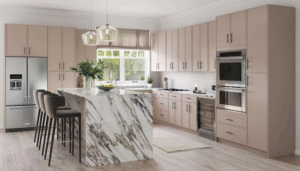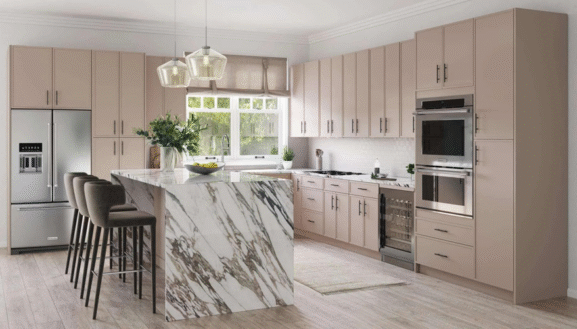Financing a Luxury Kitchen Remodel in Englewood: Smart Ways to Fund Your Dream Kitchen
- Luxury Kitchen Remodeling Englewood, Luxury Kitchen Remodeling Laurel, Luxury Kitchen Remodeling Nokomis, Luxury Kitchen Remodeling North Port, Luxury Kitchen Remodeling Osprey, Luxury Kitchen Remodeling Plantation, Luxury Kitchen Remodeling South Venice, Luxury Kitchen Remodeling Vamo, Luxury Kitchen Remodeling Venice, Luxury Kitchen Remodeling Venice Gardens, Luxury Kitchen Remodeling Warm Mineral Springs
A luxury kitchen remodel in Englewood can be a significant financial undertaking, but with careful planning and the right financing options, you can bring your dream kitchen to life without overextending your budget. Here’s a breakdown of the best ways to finance a high-end kitchen renovation in 2025.
1. Home Equity Loans
A home equity loan allows you to borrow against the equity in your home, providing a lump sum to fund your remodel.
- How It Works: You receive a fixed amount upfront and repay it in monthly installments over 5–30 years.
- Interest Rates: Typically low (7–10% APR), as the loan is secured by your home.
- Loan Amounts: Up to 80% of your home’s equity, ranging from $20,000 to $400,000 depending on your financial situation.
- Pros:
- Fixed interest rates and predictable payments.
- Ideal for large-scale remodels requiring a significant upfront investment.
- Cons:
– Your home serves as collateral, so missed payments could result in foreclosure.
2. Home Equity Line of Credit (HELOC)
A HELOC offers flexibility by providing a revolving line of credit based on your home’s equity.
- How It Works: Borrow as needed during the draw period (5–15 years) and repay during the repayment period (10–20 years).
- Interest Rates: Variable rates that may fluctuate over time.
- Loan Amounts: Ranges from $10,000 to $1,000,000 depending on equity and lender terms.
- Pros:
- Borrow only what you need, when you need it.
- Interest may be tax-deductible if used for home improvements.
- Cons:
- Variable interest rates can increase costs over time.
– Your home is used as collateral.
3. Personal Loans
Personal loans are an unsecured option for homeowners without significant equity.
- How It Works: Receive a lump sum with fixed interest rates and repayment terms (typically 2–7 years).
- Interest Rates: Higher than secured loans but lower than credit cards (often 8–15% APR).
- Loan Amounts: Up to $50,000 depending on credit score and income.
- Pros:
- No collateral required, so your home isn’t at risk.
- Fixed monthly payments make budgeting easier.
- Cons:
- Higher interest rates than HELOCs or home equity loans.
– Shorter repayment terms may lead to higher monthly payments.
4. Credit Cards
Credit cards can be used for smaller remodel expenses or finishing touches.
- How It Works: Use a card with a high credit limit and pay off the balance within the promotional period (if applicable).
- Interest Rates: Introductory rates of 0% APR for 12–18 months; post-promo rates average 20–23%.
- Pros:
- Flexible and easy to use for smaller purchases like fixtures or décor.
- Potential rewards or cashback incentives.
- Cons:
- High-interest rates after the promo period if not paid off in time.
– Risk of accumulating debt quickly.
5. Contractor Financing
Some kitchen remodeling companies offer financing plans directly or through third-party lenders.
- How It Works: Pay in installments over time, often with promotional terms like “same as cash” offers (e.g., 0% APR if paid off within six months).
- Pros:
- Convenient and tailored to your project’s cost.
- Promotional financing can save on interest if paid off promptly.
- Cons:
– High-interest rates may apply if you miss the promotional payoff deadline.
6. Government-Backed Loans
Federal programs can help fund renovations for eligible homeowners.
- Options Include:
- FHA Title I Loans: Up to $25,000 for home improvements without requiring equity or high credit scores.
- FHA 203(k) Loans: Combine purchase/refinance costs with renovation expenses under one mortgage.
- USDA Section 504 Loans: For low-income rural homeowners needing essential repairs.
- Pros:
- Accessible to those with limited credit or equity.
- Fixed interest rates and government backing provide security.
- Cons:
– Limited loan amounts may not cover extensive luxury remodels.
7. Cash Payments
Paying cash is the simplest way to finance a remodel if you have sufficient savings.
- Pros:
- No interest or loan fees.
- Avoids debt accumulation and monthly payments.
- Cons:
– Drains savings, potentially leaving you without an emergency fund.
Comparison Table of Financing Options
| Financing Option | Interest Rate Range | Loan Amount Range | Best For |
|---|---|---|---|
| Home Equity Loan | ~7–10% | $20,000–$400,000 | Large-scale projects with available equity |
| HELOC | Variable (~6–9%) | $10,000–$1,000,000 | Flexible borrowing needs |
| Personal Loan | ~8–15% | Up to $50,000 | Homeowners without equity |
| Credit Card | ~0–23% | Varies by credit limit | Small expenses or short-term borrowing |
| Contractor Financing | ~0% (promo) – High | Project-specific | Simplified financing through contractors |
| Government Loans | Fixed (~4–6%) | Up to $25,000 | Eligible homeowners needing affordable loans|
Tips for Choosing the Right Option
- Assess your financial situation and credit score before applying for any loan or financing plan.
- Compare interest rates and repayment terms across multiple lenders to find the best deal.
- Avoid over-borrowing—stick to a budget that aligns with your overall financial goals.
By carefully evaluating these options and selecting one that suits your needs, you can finance your Englewood luxury kitchen remodel smartly while keeping costs manageable.

How to Make a Small Kitchen in North Port Look Luxurious: Design Secrets
Transforming a small kitchen in North Port into a luxurious space is less about square footage and more about thoughtful design choices, clever use of

Wine Coolers, Built-In Coffee Makers & More: North Port Luxury Kitchen Extras You’ll Love
Elevate your North Port kitchen with high-end extras like wine coolers, built-in coffee makers, and other luxury appliances that combine style, convenience, and performance. Here’s

10 Must-Have Features for a High-End Luxury Kitchen Remodel in North Port
A high-end luxury kitchen remodel in North Port is defined by exceptional craftsmanship, innovative technology, and thoughtful design that blends style with function. Here are

Nokomis Luxury Kitchen Remodeling Services Near Me: How to Find the Best Contractors
Finding the best contractors for luxury kitchen remodeling services near Nokomis requires a mix of research, vetting, and aligning their expertise with your vision. A

Is a Vamo Luxury Kitchen Remodel Worth It? Factors to Consider
Deciding whether a luxury kitchen remodel in Vamo is worth it depends on your goals—whether you’re aiming to boost resale value, enhance your daily living,

Luxury Kitchen Upgrades in Plantation That Add the Most Value to Your Home
When it comes to luxury kitchen upgrades in Plantation that boost home value, the key is to focus on features that combine timeless appeal, high-quality

Custom Range Hoods & Statement Lighting for a Luxury Kitchen Makeover in Warm Mineral Springs
Transforming a Warm Mineral Springs kitchen into a luxurious space often hinges on standout features like custom range hoods and statement lighting. These elements not

The Ultimate Butler’s Pantry: A Must-Have for Luxury Kitchens in Osprey
A Butler’s Pantry has become a defining feature of modern luxury kitchens in Osprey, blending practicality with elegance. Once reserved for grand estates, this versatile

Hidden Storage & Custom Cabinetry: Space-Saving Laurel Luxury Kitchen Ideas
Hidden storage and custom cabinetry are essential for creating functional yet luxurious kitchens in 2025. These innovative solutions maximize space while maintaining a sleek, high-end

Financing a Luxury Kitchen Remodel in Englewood: Smart Ways to Fund Your Dream Kitchen
A luxury kitchen remodel in Englewood can be a significant financial undertaking, but with careful planning and the right financing options, you can bring your

South Venice Luxury Kitchen Remodeling ROI: Does a High-End Kitchen Increase Home Value?
A luxury kitchen remodel in South Venice is one of the most impactful home improvements, both in terms of functionality and resale value. While it

How Much Does a Venice Luxury Kitchen Remodel Cost? A Complete Breakdown
A Venice luxury kitchen remodel is a significant investment that transforms your space into a functional and visually stunning centerpiece of your home. Costs in

Integrated Dining Spaces: The Future of Luxury Kitchen Remodeling in North Port
In 2025, integrated kitchen-dining spaces are redefining North Port luxury kitchen design, blending functionality, style, and social interaction into a cohesive environment. These spaces eliminate

Top Luxury Kitchen Remodeling Trends for 2025 in Florida
As we approach 2025, Florida homeowners are embracing sophisticated kitchen renovations that combine cutting-edge technology with timeless elegance. The kitchen continues to evolve as the


